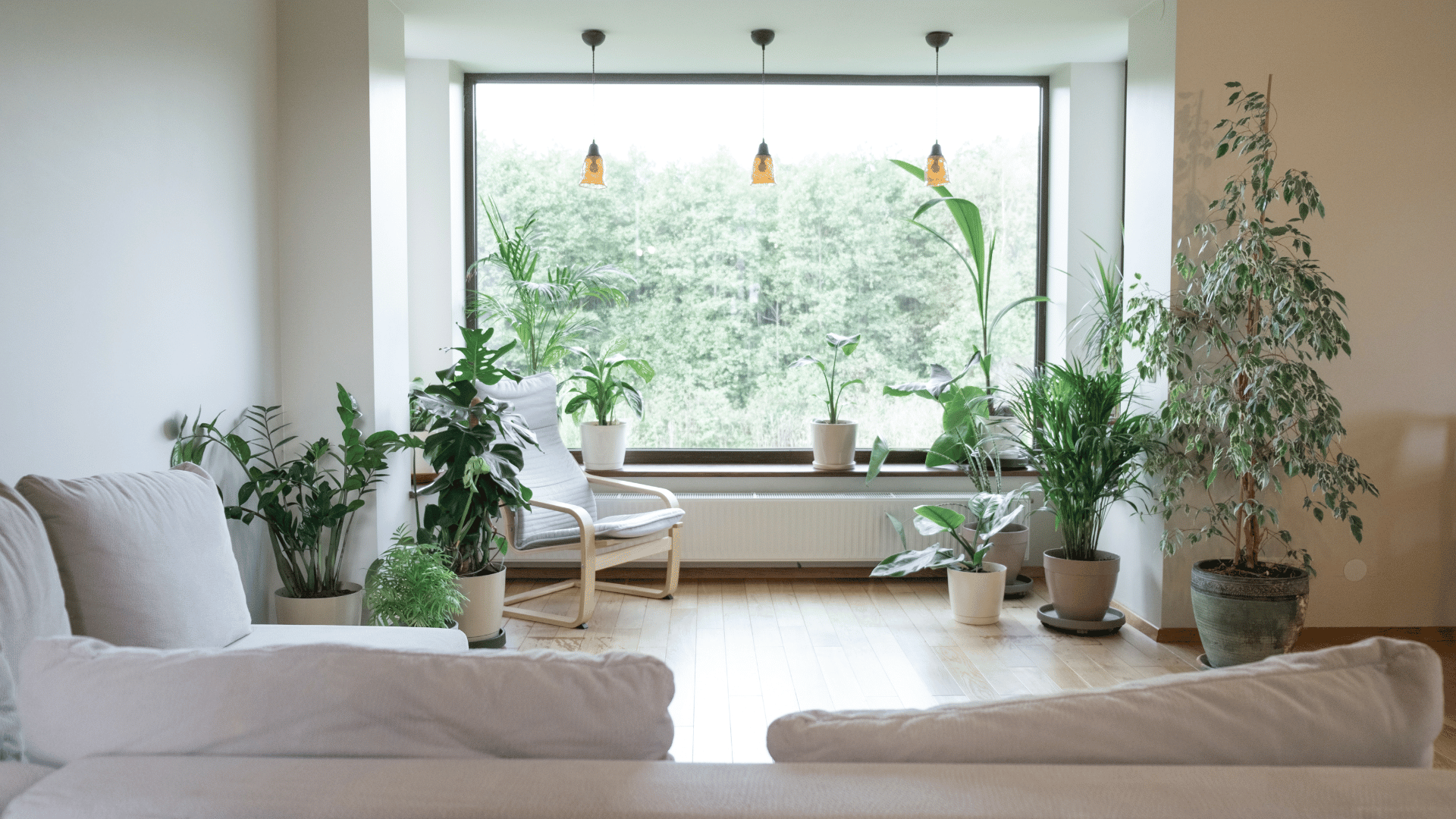Our daily surroundings can greatly affect our physical and mental health. From the fresh air that we breathe to the colors we see, every aspect of our surroundings has an impact on our well-being. Biophilic interior design is a concept that recognizes the importance of incorporating natural elements into our living and working spaces. Let's discuss the benefits of biophilic interior design and how it can improve our overall health and wellness.
What is biophilic design?
Biophilic interior design is a relatively new concept that has gained popularity in recent years. It is based on the idea that humans have an innate connection to nature and that incorporating natural elements into our built environments can improve our well-being. Some of the natural elements that are commonly incorporated into biophilic design include plants, natural light, water features, natural patterns, and natural materials such as wood, stone, and bamboo.
You may have already experienced the health benefits of biophilic design without even realizing it. Have you ever felt calm and relaxed while sitting in a room with large windows that let in plenty of sunlight? Or did you feel more productive and focused while working in an office with plants scattered around the space? These are just a few examples of how biophilic design can positively impact our well-being.
How Did the Biophilic Design Concept Start?
The term "biophilia" was first coined by psychologist Erich Fromm in the 1960s, but it was not until the 1980s that biophilic design became a formal concept. Biologist Edward O. Wilson popularized the idea in his book "Biophilia," where he discussed how humans have an innate affinity for nature and how this connection to natural habitat can have positive effects on our health.
Since then, biophilic design has evolved and has been incorporated into various fields, such as biophilic architecture, interior design, and urban planning. It is now recognized as an important approach to creating healthy and sustainable built and natural environments.
The Benefits of Biophilic Design for Your Well-Being
Now that we understand what biophilic design is and how it originated, let's explore the specific benefits it can have on human health and our well-being.
1. Improved mental health
Research has shown that spending time in nature can reduce stress and anxiety levels, improve mood, and even alleviate symptoms of depression. By incorporating natural elements into our interior spaces, we can see natural landscapes and create a sense of connection to the outdoors, which can have a positive impact on our mental health.
2. Increased Productivity and Creativity
Biophilic design has been linked to increased productivity and creativity in both the workplace and at home. Natural light, indoor plants, and views of nature have all been shown to enhance cognitive function and improve overall well-being, leading to better performance and a more creative mindset.
3. Better Air Quality
Plants play a crucial role in improving indoor air quality by filtering out harmful pollutants and increasing oxygen levels. By incorporating plants into our interior spaces, we can create a healthier, more natural light and environment for ourselves and improve our overall respiratory health.
4. A Sense of Connection to Nature
As humans, we have an innate connection to nature, and incorporating natural elements into our built environment can help us feel more connected to the outdoors. This sense of connection to the natural world can lead to feelings of calmness and rejuvenation, promoting overall well-being.
5. Sustainable Living
Biophilic design is not only beneficial to our well-being as interior designers, but it also promotes sustainable living. By incorporating natural materials and elements into our interior spaces, we can reduce our carbon footprint and create a healthier environment for ourselves and the planet.
Types of Spaces That Can Benefit From Biophilic Design
"Biophilic design strategies can be incorporated into any space, from homes and offices to healthcare facilities and educational institutions. Wherever people spend a significant amount of time, biophilic design can enhance the experience and promote better health and well-being. Here are some specific spaces that can greatly benefit from biophilic design:
- Offices and workspaces: Incorporating biophilic elements into offices and workspaces can improve productivity, creativity, and overall employee well-being.
- Homes: Biophilic design can create a more relaxing and rejuvenating environment in our homes, promoting better mental health.
- Healthcare facilities: Studies have shown that incorporating natural elements into healthcare facilities can help reduce stress and anxiety levels in patients, leading to better recovery outcomes.
- Educational institutions: Biophilic design has been shown to enhance learning and focus in students, making it a beneficial approach for schools and universities.
- Commercial spaces: From retail stores to restaurants, incorporating biophilic design elements can create a more inviting and calming atmosphere for customers, leading to better sales and customer satisfaction.
How to Incorporate Biophilic Design into Your Space?
You may be wondering how you can incorporate biophilic design into your own living or working space. Here are a few simple ways to get started:
1. Go green with plants. Adding plants to your space is an easy way to make green walls incorporate biophilic elements. Not only do houseplants look pretty, but they also help purify your air and promote relaxation. There are so many plants to choose from, whether they are potted plants or hanging plants. You can even consider a living wall or a vertical garden if you have the space for one.
2. Natural lighting: light is key. Natural light is essential in biophilic design. Sunlight can be the perfect mood booster and help regulate circadian rhythms. Spend time balancing natural light with artificial light, making sure that the natural light doesn’t create any glare and offers a view of the outdoors. A well-lit room is ideal for free-flowing design and reduces the need for artificial lighting during daylight hours.
3. Play with natural shapes, textures, and natural materials. Incorporating natural materials like natural stone, wood, rattan, or woven textiles can create a sense of connection to nature. They can be incorporated into any design element, from flooring to furniture. A unique material can add a perfect finishing flourish, like a wooden armchair or a marble counter.
4. Water elements: Another great way to bring biophilic design into your space is by integrating water. A water feature, such as a tabletop fountain or a small aquarium, is not only calming, but it also adds a sense of tranquility within a space, creates spaces, and is ideal for condo spaces. Make sure you keep the water source maintained and that you use a water source that’s correct for the location.
5. Nature-inspired art: The final element you can try in biophilic design is nature-inspired art. Artwork can be abstract or literal, as long as it evokes nature. Pick up a landscape painting or an abstract piece that features the botanical print of your favorite plant. Or, to expand your imagination, why not try a piece that has natural features or the silhouette of a tree or animal?
Incorporating biophilic design and natural systems into our interior spaces has numerous benefits for our mental and physical well-being. By connecting to nature through the use of natural elements, we can create healthier and more sustainable living and working environments.
With a few simple changes, anyone can incorporate the biophilic design principles into their space and reap its numerous rewards. So why not give it a try and see the positive impact it can have on your life? So go ahead, bring some nature indoors, and enjoy all the benefits that biophilic design has to offer. Happy decorating!

.png)









